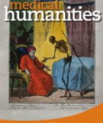Enactive or inactive? Cranially envatted dream experience and the extended conscious mind
Article published in Philosophical Explorations, An Internationa Journal for the Philosophy of Mind and Action
Abstract
When we dream, it is often assumed, we are isolated from the external environment. It is also commonly believed that dreams can be, at times, accurate, convincing replicas of waking experience. Here I analyse some of the implications of this view for an enactive theory of conscious experience. If dreams are, as described by the received view, “inactive”, or “cranially envatted” whilst replicating the experience of being awake, this would be problematic for certain extended conscious mind theories. Focusing specifically on Alva Noë’s enactive view, according to which the vehicles of perceptual experience extend beyond the brain, I argue that dreams are a quandary. Noë’s view is that dreaming is consistent with enactivism because even if dreams are inactive and shut off from the external environment, they are not “full-blown” perceptual consciousness, and also, there is some reason to reject the inactive claim. However, this view rests on an unjustified and reductive account of dreams which is not supported by empirical evidence. Dreams can indeed replicate waking phenomenal experience during inactive periods of sleep, and we have no reason to suspect that dreams which are more inactive are less “full-blown”. Taken together, this shows that dreams are indeed relevant to extended conscious mind theories and need to be taken into account by enactivists.
Article
Rosen, M.G. (2018): Enactive or inactive? Cranially envatted dream experience and the extended conscious mind. Philosophical Explorations, Volume 21, Issue 2
Contact
Postdoc Melanie Rosen, IMC



